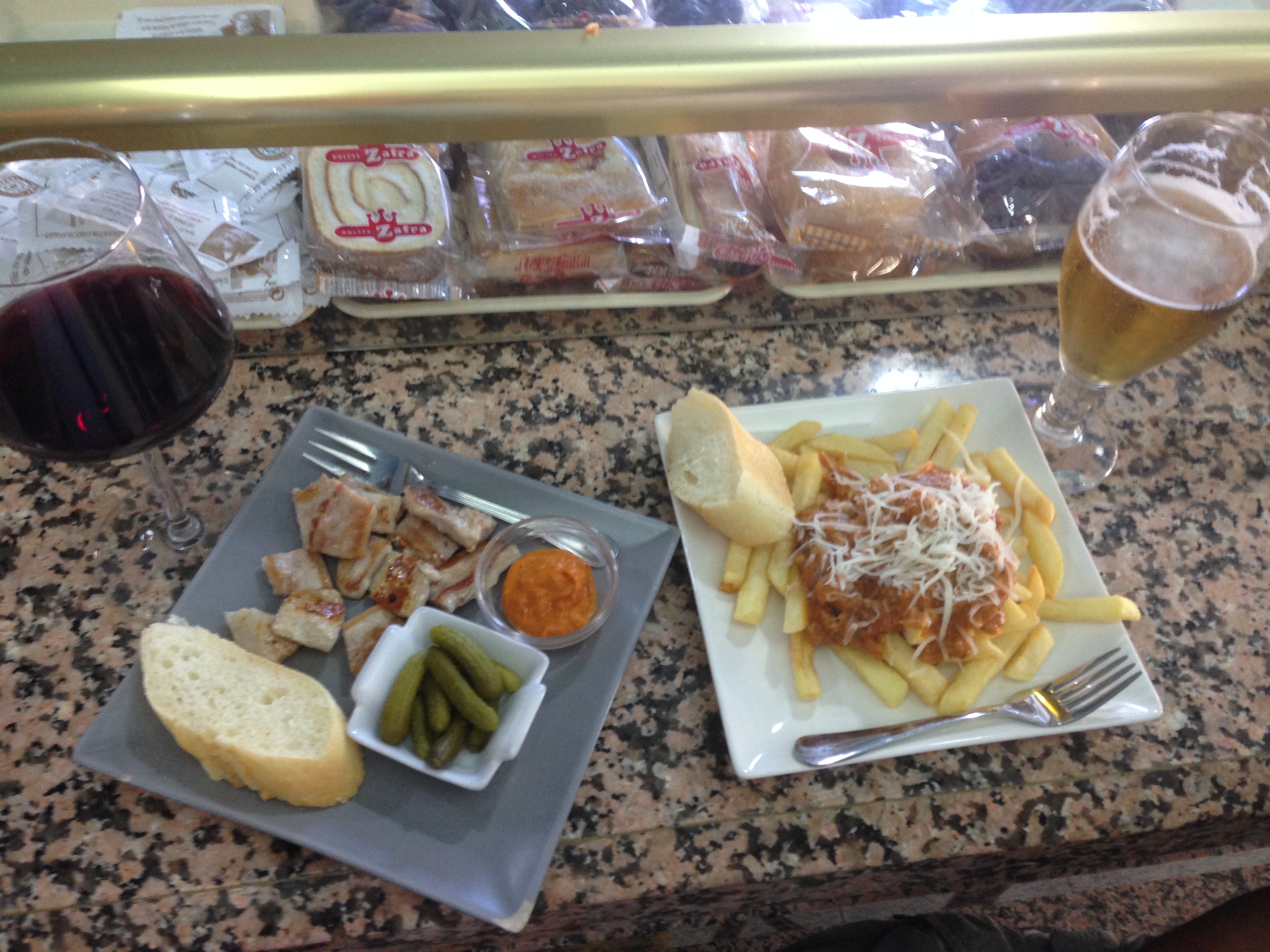
Lately I have been reading through a couple of my favourite books about culinary history focussed on medieval cuisine. One is about the Islamic World and the other is about Sephardic cuisine. I plan on making some of the recipes that I have been reading about in these amazing books. So, why the heck am I writing about fried pork belly you might ask??
Well, while recording my YouTube video last weekend we decided to include one of my favourite bars in Granada to end on a local gastronomic note. Nothing gourmet. Just a long and true old time taberna near Plaza Nueva called Bodegas La Mancha. I used to live on the street where La Mancha is located, Calle Joaquin Costa. On this street you will also find the historic Hotel Inglaterra designed by local arquitect Angel Casas in the 1920´´’s, the Hotel Anacapri (a Rick Steves hotel) and the Hostal Colonial, my home for many years which deserves its own blog post.

When I lived on this street over twenty years ago we used to frequent La Mancha. Carmen, (may she rest in peace) who ran the Hostal Colonial would send me down the street to grab our dinner on nights that we were feeling too lazy to cook. I would push through the crowds to order our usual. Carmen always wanted a bocadillo with jamón Serrano y roquefort. And I would annoy the men in white shirts and black ties by asking for something ¨”strange” in their eyes. Back then they wouldn’t ever vary off the menu. But, since I lived with Carmen they put up with me and would prepare my bocadillo con queso, tomato y lechuga. Both me and my sandwich were very odd to them back then. We would also get a liter of Jumilla wine to go. I remember paying 115 pesetas for the wine. That was less than a dollar during those years.

For many years now when I go into La Mancha I am always greeted with warmth and good memories. The older gentlemen still remember me and they still remember Carmen, of course. So do many of the fixed customers who spend time drinking Vermouth or a Palo Cortado (a variety of sherry) at the beautiful wooden bar. Everyone knew Carmen from el Hostal Colonial.

Nowadays we stop in here when we take a nice walk up into the Albaicín or Sacromonte to have a bocadillo and a wine or vermouth. The old tabernas like La Mancha near Plaza Nueva are the best places to really feel what Granada should feel like regardless of the times we live in now.
Usually we stick to our favourite bocadillo made with thinly sliced grilled beef, roquefort cheese and a couple of guindillas (pickled spicy peppers). But, last weekend since we were filming the video we went out on a limb and got a plate of Torreznos from Soria. Torreznos is not a food that I consume often. I can probably count the amount of times I have eaten them on one hand. The last two times I ate Torreznos before last weekend was with the same friend. Once in Pamplona and once in Madrid right before confinement. I can still hear Paco saying, “Vamos a ese bar dónde el dueño es Segoviano y tiene unos torreznos buenísimos!”

A torrezno is basically fried pork belly, or sometimes described as fried thick bacon. Torreznos can be cut and prepared differently depending on what part of the country you are visiting. Even the name can change. However, it has been eaten in Spain since the Middle Ages since it is mentioned in certain works of literature such as Lazarillo de Tormes. Author anonymous. It is eaten especially during the time of year of the Matanza when a pig is killed. Every bit of the pig is used for different preparations and delicacies. Matanzas are held all over Spain and Portugal and in other countries. A torrezno should be eaten at room temperature to enjoy its flavour best. You can have it with beer or wine but for me, wine is the only way to wash it down. Practice moderation when consuming torreznos. Remember your heart and your arteries but enjoy every delicious moment!!! And don’t forget to watch my video about the Realejo neighbourhood in Granada where we end at Bodegas La Mancha. Salud!!
A walk through Granada, El Realejo

















